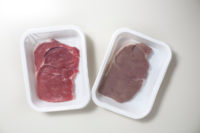Intelligent packaging and recyclability to be top two disruptive technologies in flexible packaging

The top five disruptive technologies in flexible packaging are forecast to be intelligent (smart) packaging, recyclability, packaging openability, bio-based polymers and digital printing, according to a new market report by Smithers Pira (smitherspira.com).
Ten-Year Forecast of Disruptive Technologies in Flexible Packaging to 2023 identifies and assesses technological, economic, consumer, sociological, environmental and regulatory developments and trends which will impact the flexible packaging industry over the next 10 years to 2023. The 25 highest ranked developments were selected for further study with regard to their impact on the flexible packaging supply chain, commercial products and associated technologies and trends. Based on current flexible packaging markets, the center of attention within the report is inevitably food and beverage packaging, but other applications are considered including pharmaceuticals, household chemicals, medical devices and electronics, together with a wide range of flexible packaging materials including plastics, paper and metal foils.
Because of growing consumer focus on convenience and sustainability, general flexible packaging use has been growing rapidly worldwide both in absolute and percentage terms. It is gaining market share from other packaging formats such as rigid packaging. This growth is projected to continue because flexible packaging, particularly pouch packaging, uses less energy and materials and has lower transport costs, environmental impact and carbon footprint than its rigid counterparts.
These current trends concerning flexible packaging and rapid growth are anticipated to continue and increase over the next 10 years to 2023. There will be continuous development of new flexible packaging products for new markets and applications encroaching on traditional rigid packaging. High growth is expected in Europe and North America, as well as in the emerging markets of Asia and Central and South America.
Important drivers from a manufacturing viewpoint will include savings in materials, manufacturing and transportation costs and increased line filling speeds for pouches to match those for rigid bottles. From the consumer viewpoint, two important drivers will be the growing focus on convenience and sustainability.
The new market study states that the innovation in and implementation of smart and active packaging over the next 10 years will be the key disruptive factor affecting the flexible packaging industry. So far, these technologies have been retarded by high cost, consumer resistance to items such as sachets in packaging, and concerns about excessive packaging. However, the deployment of intelligent packaging is expected to become much more frequent with decreasing cost, increasing emphasis on food safety, anti-counterfeiting, new regulations and brand owner/consumer demand. These technologies, particularly together with printed electronics and digital printing, will become more widespread in the years to 2023. This will lead to dramatically expanded perceptions of the function of packaging, beyond the traditional containment, preservation, protection and identification to include a wide range of monitoring, tracking, warning, remediation, authentication, communication and brand protection.
According to the report, the second most disruptive technology in flexible packaging is recyclability. Because of the small amount of material used in a flexible package, it generates much less waste than other formats. However, it is not currently feasible to mechanically recycle postconsumer flexible packaging because of its thin film structure, multi-layered composition and often contamination by food waste. This situation could create problems with the sustainability and recyclability goals of many major corporations or with the reduced or zero landfill policies of many governments. More easily recyclable materials and barrier structures, including monolayers, are expected to be introduced over the next 10 years, but this will not resolve the problem unless improved collection, sorting and recycling infrastructure is implemented.
Looking for a reprint of this article?
From high-res PDFs to custom plaques, order your copy today!







